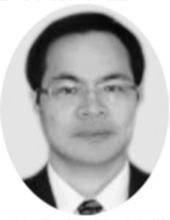Best Paper Award
Design of Compact Ultra Wide-Band Bandpass Filters Using Short-Circuited Stubs with Improved Stopband Characteristics
Ryuhi HAMANO, Zhewang MA, Masataka OHIRA
[Trans. Electron. (JPN Edition), Vol.J99-C, No.12 December 2016]

Ryuhi HAMANO
Zhewang MA
Masataka OHIRA
With the ever-increasing demand for wide-band and high-speed wireless communications, research and development on related technologies have been carried out all over the world. As one of the prospective candidates, ultra-wideband (UWB) communication technology has attracted a lot of attention from a large number of researchers. However, since UWB technology uses an extremely wide frequency band, from 3.1 to 10.6 GHz, it may cause serious interference with other existing wireless communication services, like mobile phones and Wi-Fi systems.
The UWB bandpass filter (UWB BPF) can act as a key device to effectively avoid the above-mentioned interference, and it has been widely studied and reported in many publications. Although most of the reported UWB BPFs achieved a wide passband, they failed to realize the large attenuations and wide stopband required by the Federal Communications Commission (FCC).
In this paper, a ninth-order UWB BPF is developed using microstrip transmission lines and short-circuited stubs. The circuit has features like simple structure and easy fabrication with low-cost. To obtain the desired wide passband with sharp frequency selectivity, the filter is designed based on rigorously derived theoretical formulas and an optimal algorithm developed by the authors. Then the UWB BPF is folded to reduce its size and cascaded with a broadband band-stop filter (BSF) to suppress spurious resonances at high frequencies. The filter is fabricated, and its measured frequency response agrees well with the design prediction, showing a midband frequency of 6.85GHz, a fractional bandwidth of about 95%, and insertion loss of 1.4dB at the center frequency. The maximum reflection loss is about 10dB and the variation of group delay is less than 0.5ns in the passband. The total structure of the filter is compact, and the FCCfs UWB spectral musk is satisfied well over a wide frequency range from DC to 28GHz.
This paper proposes a novel and precise design method for wideband PBFs, and develops a UWB BPF with excellent performance. The paper provides both a significant theoretical contribution and a potential possibility for practical applications. Therefore, it is acknowledged that this paper is deserving of an IEICE Best Paper Award.






